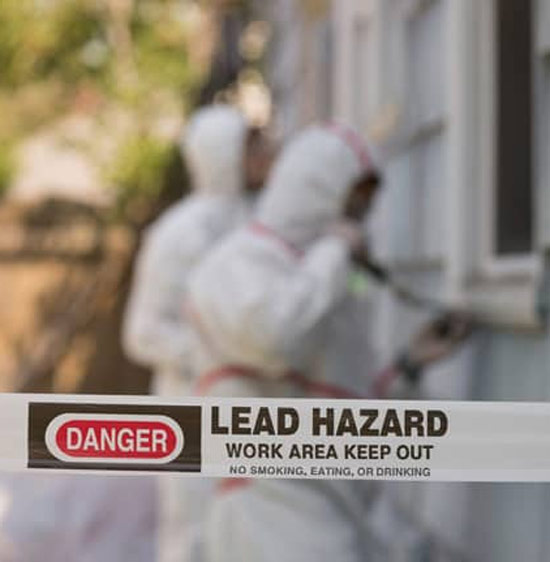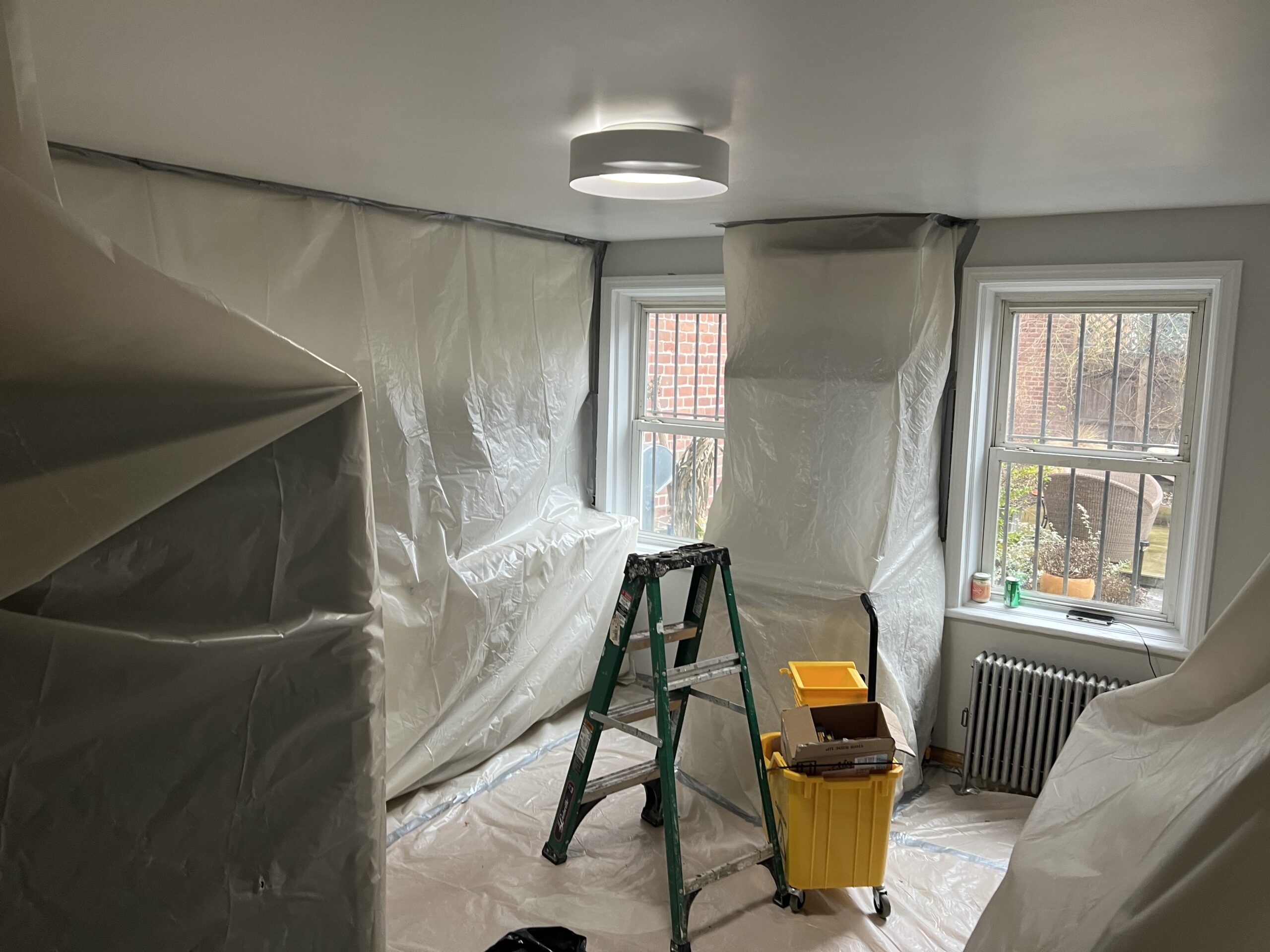Step-by-Step Process for Effective Lead Infraction Removal
Attending to lead violations requires a meticulous and structured approach to ensure both safety and regulative compliance. The journey starts with the precise discovery and assessment of contamination sources, utilizing sophisticated analysis tools. Following this, adherence to federal and state guidelines is critical to creating a reliable remediation plan. Such a strategy needs to information the particular techniques and timelines for activity. The real removal calls for skilled employees to apply these strategies while strictly adhering to safety protocols. Yet what occurs after the removal is completed? The solution hinges on comprehending the essential post-remediation methods that ensure lasting safety and neighborhood health.

Discovery and Analysis
Discovery and analysis are critical actions in the remediation of lead infractions. To make certain an effective remediation process, it is necessary to carry out a complete assessment of the setting where possible lead exposure exists.
This includes evaluating the extent and severity of contamination, as well as recognizing populations at danger, particularly children and pregnant females. The gathered data need to be thoroughly recorded to support the advancement of a reliable remediation approach.
Additionally, it is imperative to prioritize locations with the highest possible degrees of contamination and those that present the best health risks. Effective communication with stakeholders, including residential or commercial property proprietors, residents, and public health and wellness authorities, is vital for making certain that all celebrations are educated concerning the searchings for and the subsequent steps needed for removal. This initial detection and assessment phase lays the groundwork for an effective lead infraction remediation process.

Legal and Governing Conformity
Browsing the landscape of legal and regulative conformity is a critical aspect of successful lead infraction remediation. Conformity makes sure not only the safety and security of damaged populaces but additionally the credibility and lawful standing of the company in charge of removal. Regulations governing lead contamination are multifaceted, incorporating government, state, and regional laws. At the federal level, the Environmental Protection Firm (EPA) sets strict requirements under the Poisonous Compounds Control Act (TSCA) and the Lead-Based Paint Remodelling, Fixing, and Paint Regulation (RRP Policy)
This entails meticulous documentation of all removal tasks to demonstrate conformity. Failing to adhere to these laws can result in extreme charges, consisting of substantial penalties, legal action, and reputational damages.
Engaging legal specialists concentrated on environmental law can assist in navigating these complexities. Regular training and accreditation for all personnel involved in the remediation procedure are likewise compulsory to ensure adherence to safety and security and regulatory standards. By focusing on lawful and governing compliance, companies can successfully alleviate threats and accomplish a successful remediation outcome.
Planning the Remediation
Effectively preparing the remediation of lead violations begins with a thorough assessment of the polluted website. This preliminary analysis ought to consist of a thorough site investigation to determine the level and focus of lead contamination. Comprehensive sampling and research laboratory analysis are vital to create an accurate contamination account. This data-driven technique makes sure that remediation initiatives are properly targeted and effective.
As soon as the contamination is mapped, a risk assessment ought to be carried out to assess prospective wellness threats to people and the environment. Lead Violation Removal in NYC. This assessment must consider factors such as direct exposure paths, populace vulnerability, and environmental effects. The understandings gathered will form the basis for choosing an ideal remediation approach
Ultimately, setting clear, possible goals for the removal project is vital. These purposes must align with regulative requirements and stakeholder assumptions to make sure conformity and neighborhood approval. Creating an in-depth remediation strategy that outlines techniques, timelines, and resource allocation will promote an organized method to the cleanup procedure.
Furthermore, it is important to engage with stakeholders early and preserve clear interaction throughout the preparation stage. This includes notifying local communities, acquiring required permits, and coordinating with regulatory companies to make sure all lawful and procedural needs are satisfied. A well-crafted removal plan not only deals with the contamination efficiently yet likewise develops depend on and teamwork among all parties entailed.
Implementing the Removal
With a well-structured remediation strategy in position, the focus moves to the real execution of the remediation activities. This phase includes activating the needed sources, including knowledgeable workers, specific devices, and high-quality materials. Begin by plainly defining roles and obligations to make certain accountability and seamless control amongst staff member.
The preliminary step in implementation is to safeguard the site. This includes setting up control locations to stop lead dirt and debris from spreading, in addition to utilizing air filtering systems to preserve air high quality. Next off, continue with the elimination of lead-based products. Utilize techniques such as wet scratching, chemical stripping, or encapsulation, depending on the severity and location of the contamination. It is vital to follow safety protocols, including using personal safety devices (PPE) and correct disposal of hazardous materials.
Throughout the removal process, conduct regular evaluations and air quality keeping track of to guarantee conformity with governing standards. Reliable interaction with stakeholders, consisting of homeowner and owners, is critical to keep them informed of progress and any type of unanticipated developments. By carefully adhering to these actions, the remediation activities can be carried out efficiently and successfully, inevitably mitigating lead threats.
Post-Remediation Strategies
Post-remediation methods play a crucial duty in ensuring the long-lasting success of lead offense removal description efforts. These methods incorporate continuous tracking, upkeep, and area education to avoid future lead direct exposure and make certain a risk-free setting.
First, routine surveillance is important. This includes regular testing of the previously influenced locations to guarantee that lead degrees continue to be within secure restrictions. Homeowner should develop a schedule for these examinations, ideally in cooperation with licensed ecological experts.

Third, educating the community plays a crucial duty in maintaining the advantages of removal. Locals and residential or commercial property managers ought to be educated about the dangers of lead exposure and the most effective methods for keeping a lead-safe environment. Workshops, educational pamphlets, and neighborhood meetings can be reliable find devices for distributing webpage this information.
Conclusion
Effective lead infraction remediation needs a comprehensive, systematic technique encompassing detection and analysis of contamination, adherence to lawful and regulatory criteria, meticulous preparation, and effective implementation of remediation initiatives. Post-remediation approaches, including continuous monitoring and area education, are vital to maintain a lead-safe setting. Partnership with environmental professionals ensures continuous conformity and defense of public health. This methodical process highlights the significance of thoroughness and watchfulness in attending to and mitigating lead contamination.